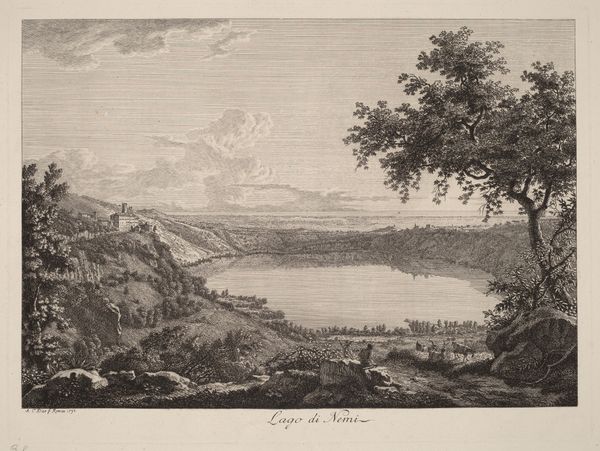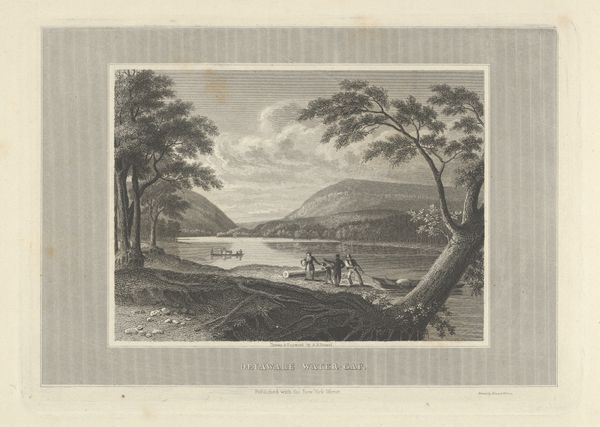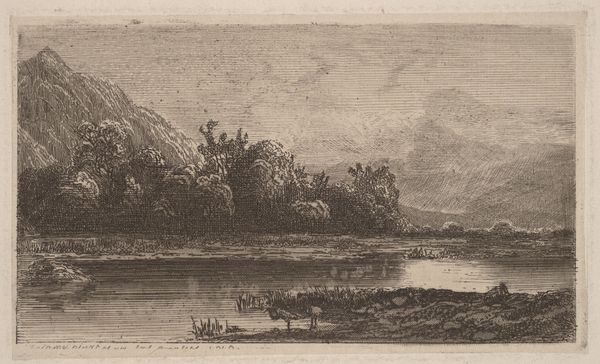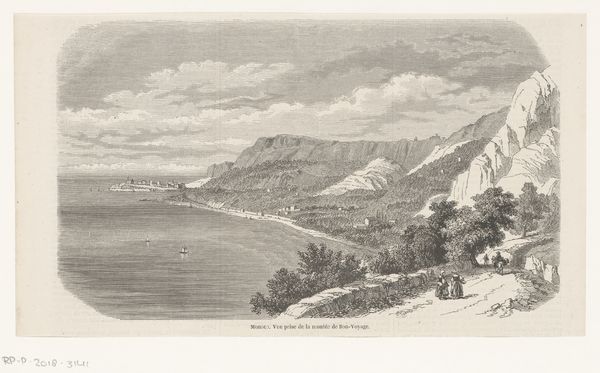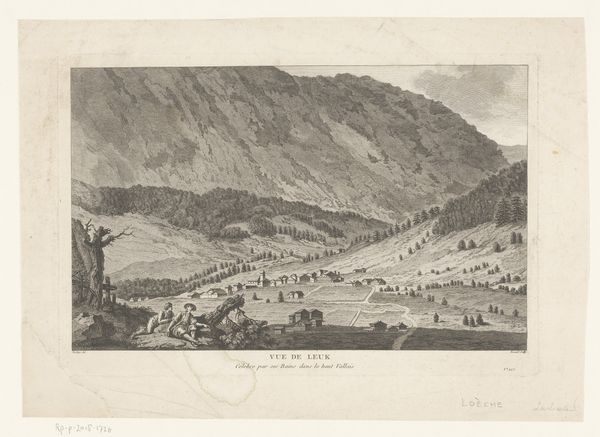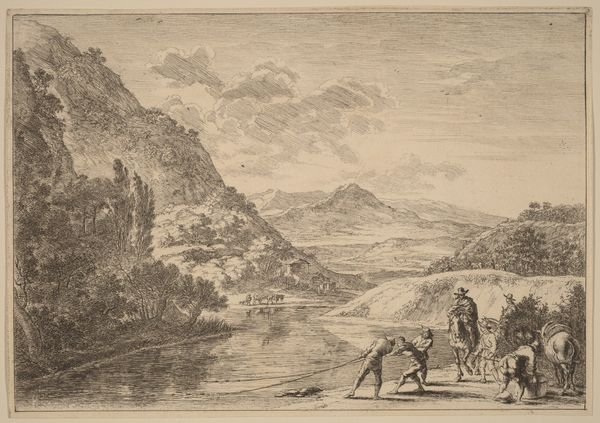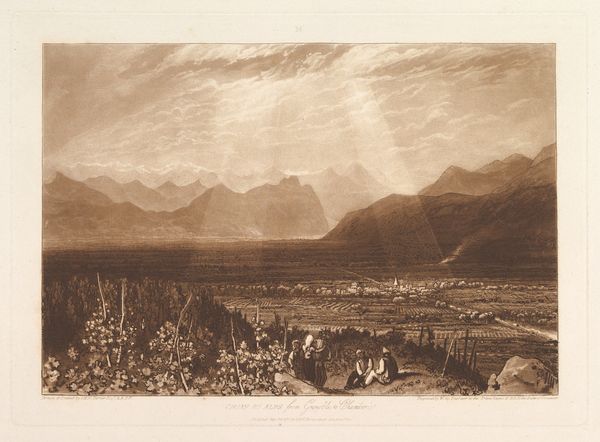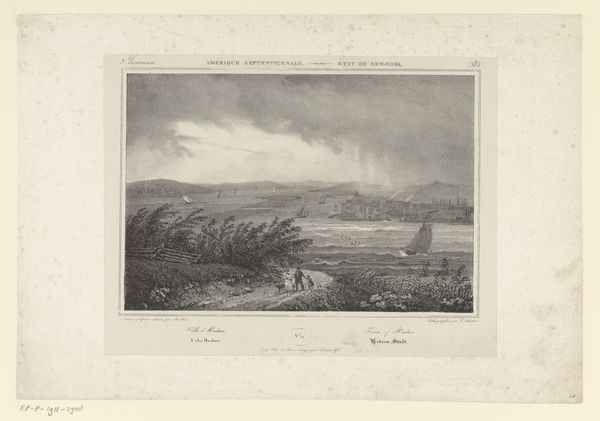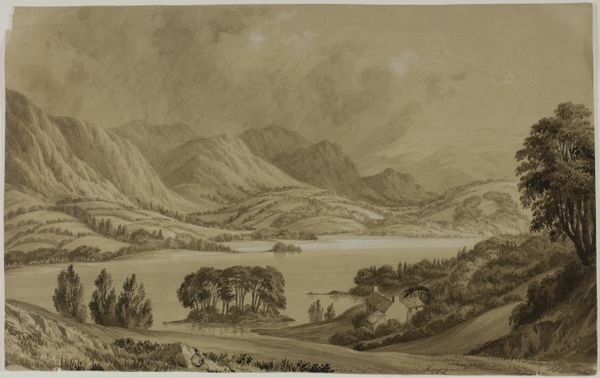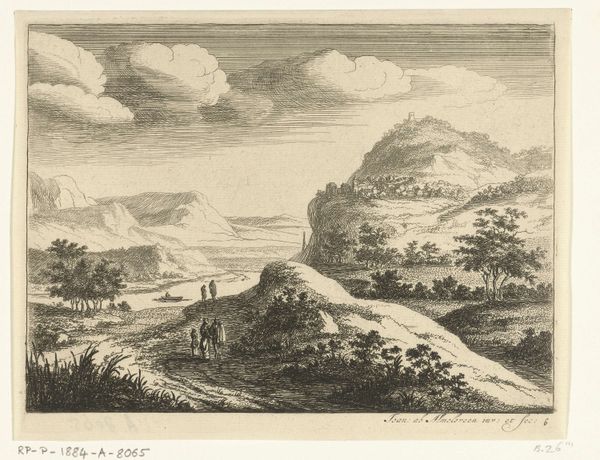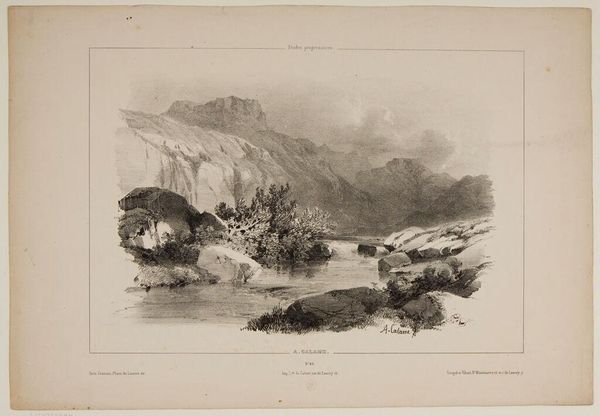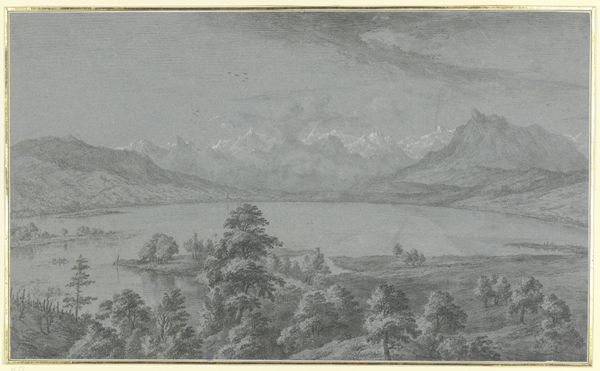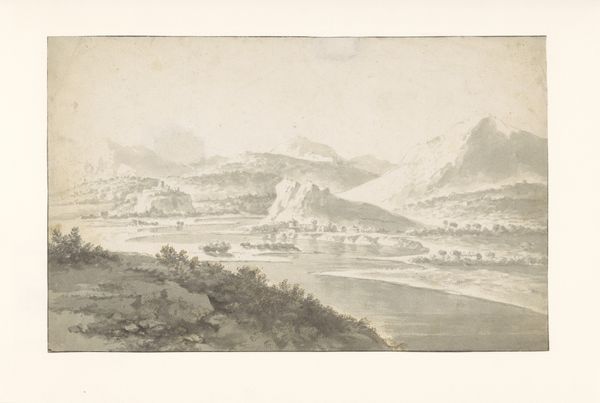
drawing, print, etching, pen
#
drawing
#
lake
# print
#
pen sketch
#
etching
#
pencil sketch
#
landscape
#
etching
#
romanticism
#
mountain
#
pen
Dimensions: Sheet: 14 3/16 × 21 3/16 in. (36 × 53.8 cm) Image: 9 5/8 × 12 3/16 in. (24.5 × 31 cm)
Copyright: Public Domain
Curator: Here we have Eugène Isabey's "Aidat Lake," an etching from 1831 depicting a serene Norwegian landscape. My first thought is of tranquility despite the rather looming mountains. Editor: It is indeed tranquil, though tinged with a melancholy. Look at the cloud formations, mirroring the jagged peaks. The composition uses a stark contrast—the dark foreground against the luminous lake. There's a delicate balance between realism and idealized landscape, typical of the Romantic period. Curator: And the Romantic period was deeply impacted by a desire for the picturesque as landscapes began to serve increasingly as symbols for larger philosophical movements. Editor: Precisely. Notice how Isabey's technique creates depth using intricate line work and varied tonal values. The etching skillfully captures the reflection of light on the water, which pulls the viewer in and moves us along the shore. The buildings huddle together—are these real or just a visual suggestion of quaintness? Curator: Likely more imagined than a perfectly rendered document. This print provided accessible imagery of Northern European landscapes to a Parisian audience eager to embrace romanticism. The increasing industrialization of French society created a ready market for works idealizing nature and simpler lives, don't you think? Editor: It does speak to that longing for a more bucolic past as France wrestled with industrialization and modernization. Isabey carefully leads the viewer's eye through the composition; we observe a mastery in how he uses texture and shadow. Curator: It's fascinating to consider Isabey's artistic choices in the context of burgeoning print culture. Landscapes such as "Aidat Lake" fulfilled a public appetite for romantic representations and fantasies that resonated deeply with early 19th-century sentiments. Editor: It invites prolonged contemplation of both artistic merit and a wider perspective of social impact. The mood and tonal harmony within the frame make it truly remarkable. Curator: It offers a subtle glimpse into the dialogue between art, social aspiration, and cultural value. Editor: A truly insightful work; now to our next subject.
Comments
No comments
Be the first to comment and join the conversation on the ultimate creative platform.
